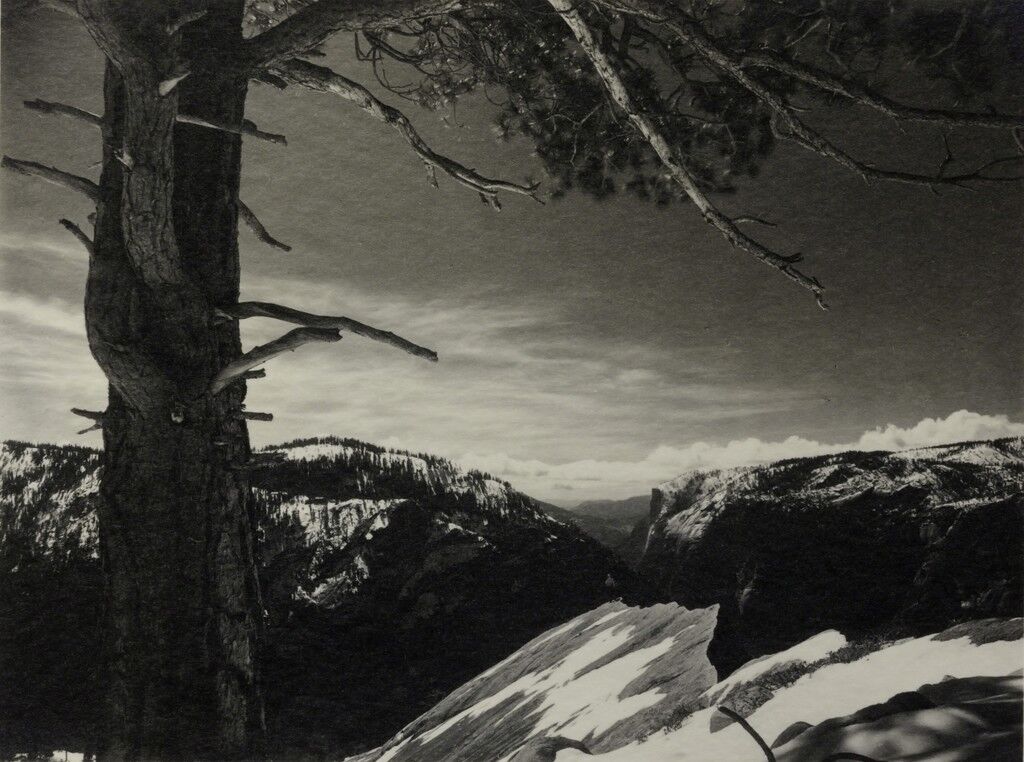
Ansel Adams was born February 20th, 1902 in San Fransisco, California. In 1915 he was taken out of school because he despised the normal routine of the educational system, because of this his father bought him a season pass to the Panama Pacific Exposition. This was a crucial phase in his life that led him into later on pursuing photography.
He actually considered himself more of a musician, a pianist first and a photographer second. In San Fransisco he was locally renowned as a great pianist but he new that this talent could only spread his fame locally. That was until 1927 Ansel Adams took, or as he would like to say made, his first acknowledge photograph at Yosemite National Park.
Adams was presented with this opportunity to make this portfolio when his mentor Albert Bender challenged him into photographing large format landscapes of mountains. He excepted the challenge and his results set a trajectory for what he would continue to photograph years to come.
For example, in Clearing the Winter Storm he again returned to Yosemite; he often photographed there. With many landscape photographs there isn’t just one subject, you’re meant to see everything. But they often have place’s of focus and attention that then lead you to exploring other parts of the scenery.
With the black and white photography done by Ansel Adams a main challenge that he addressed, aside from the moving around the large, awkward equipment, was that the viewer will never be able to feel the same emotion he felt. This is because of the loss of color, but in that he gained much more with having such huge principle removed from the equation. It was clear that communicating to audience couldn’t be done through color, therefore narrowing the focus and telling the story differently through things like line, repetition, pattern, value, texture and symmetry.
The reason work done by Ansel Adams resonates with me is because the photographs he makes felt like they were worth taking. In photography you have the ability to eternalize a moment that was only meant to last a second, but you can’t truly recreate that moment with a camera. So, in order to come close to that you must use precise compositions to show the audience why that moment was worth eternalizing. Every piece by Adams you can feel his desire to capture a moment even though he knew he’d lose the color yet still successfully give you enough of a story to tell for yourself.
Work-cited
http://www.zpub.com/sf/history/adams.html
https://www.artsy.net/article/artsy-editorial-photograph-made-ansel-adams-famous
https://www.britannica.com/biography/Ansel-Adams-American-photographer






